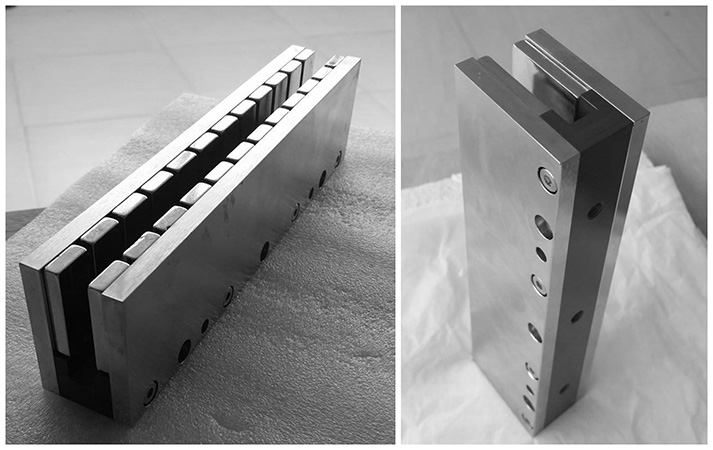With the improvement of living standards, more and more humanized intelligent home products have appeared in our homes, bringing us new comfort. But at the same time, the widespread use of intelligent home products will also bring some maintenance problems.
As one of many smart products, smart toilets are no exception. Compared with the ordinary toilet, the smart toilet gives us a more comfortable and convenient feeling, but after a long time of use, the smart toilet will inevitably have some fault problems, not only the fault of the ordinary toilet, but also some problems of intelligence.
The toilet is one of the household products with high frequency of use at home. If it is out of order, it is quite inconvenient to use. Today, we will learn about the common faults and maintenance methods of smart toilets.
1. Blockage: If the flushing is not enough or if it falls into foreign objects or aging, the toilet will be blocked. If it is a soft object, use a simple dredge tool to solve it. If it is a hard object, it is generally necessary to open the toilet.
2. Leakage: The aging or damage of the toilet tank fittings is generally unsatisfactory. Generally, there is a problem with the float or the water seal. Replace it.
3. Installation problem: Use glass glue or cement when installing at the bottom. Do not seal the screw holes on the bottom of the toilet during installation.
4. Button failure: The most common is the double button, the button can be replaced directly.
5. The water is not hot (others are normal): check the remote control, the water tank heating tube, the water temperature sensor, the thermal fuse and the computer board;
Treatment: Whether the remote control temperature setting is normal temperature? Wait for 10 minutes. If there is no heat, please unplug the measuring tank. The resistance of the heating line is about 92 ohms. Then measure whether there are 92 ohm resistors at both ends of the heating tube. If the fuse is not broken, the resistance value (25K ~ 80K) at both ends of the temperature sensor is normal. If it is normal, the computer board is broken. For example, if the water tank is changed, the detection is normal after the replacement. If the water is heated, the computer board will be replaced.
6. The seat temperature is not heated (other normal): check the remote control, the seat heating wire, the temperature sensor, the computer board and the connector;
Treatment method: set the heating state with the remote control (waiting for 10 minutes) If there is no heating, please unplug the heating wire of the seat to measure the resistance at both ends of 960 +/- 50 ohms. If there is no electric heating wire open, if there is temperature measurement The resistance at both ends of the sensor (5K ~ 15K) is normal, is the connector in good contact? If it is normal, the computer board is broken. If the seat is changed, the detection is normal after the change. If the seat is always heated, the computer board must be replaced.
7. The air temperature is not hot (others are normal): check the drying device and the computer board;
Treatment method: Measure whether there is 89+/-4 ohm resistance at both ends of the drying electric heating wire frame. If not, the drying device is broken. If yes, confirm the correct seating and press the drying key to measure whether there is 220V voltage at both ends of the heating wire frame socket. If there is no voltage, the computer board is broken. If the drying device is changed, the computer board should be carefully checked. Remark: If the short circuit between the motor slots is sometimes caused by the increase of the load and the slowdown of the speed, the heating wire frame will open, which will cause the computer board D882 to burn out. At that time, please refer to the computer board and the drying device at the same time.
8. All of the above are common faults and treatments for smart toilets. If there is a problem that you can't handle, you should ask a professional to handle it.

Linear motor
Linear motor is an electric motor that has had its stator and rotor unrolled so that instead of producing a torque (rotation) it produces a linear force along its length
However, linear motors are not necessarily straight
Characteristically, linear motor's active section has ended, whereas more conventional motors are arranged as a continuous loop
Features of linear motors:
1. Light duty motors for lower force applications with same durable and rugged construction
2. Fan cooled and liquid cooling options for maximum performance
3. Custom designs for any application
4. Available as a component in a complete system solution that includes brushless linear motors, drives, motion controllers, cabling, filters and accessories
Benefits of the linear motor
Maximize positional accuracy while minimizing maintenance costs
Easy to install
Rugged and durable design with a single moving part ensures consistent and dependable operation
Long lasting operation for years of service with minimal downtime
Versatility achieved through the factory or on-site programming for initial commissioning and changing customer requirements
Precise control for any required position, velocity or force profile
Controllable and variable force at any point during operation (dependent upon drive selection)
Built-in thermal and fault detection enables system protection and increases effective service life
Applications:
U-channel and flat brushless linear servomotors have proven ideal for robots, actuators, tables/stages, fiber optics/photonics alignment and positioning, assembly, machine tools, semiconductor equipment, electronic manufacturing, vision systems and in many other industrial automation applications
Linear Motor Magnet Assembly,Linear Actuator Motor,Linear Motion Systems,Small Linear Motor
Chongqing Great Well Magnet Co.,ltd. , https://www.gwmagnet.com